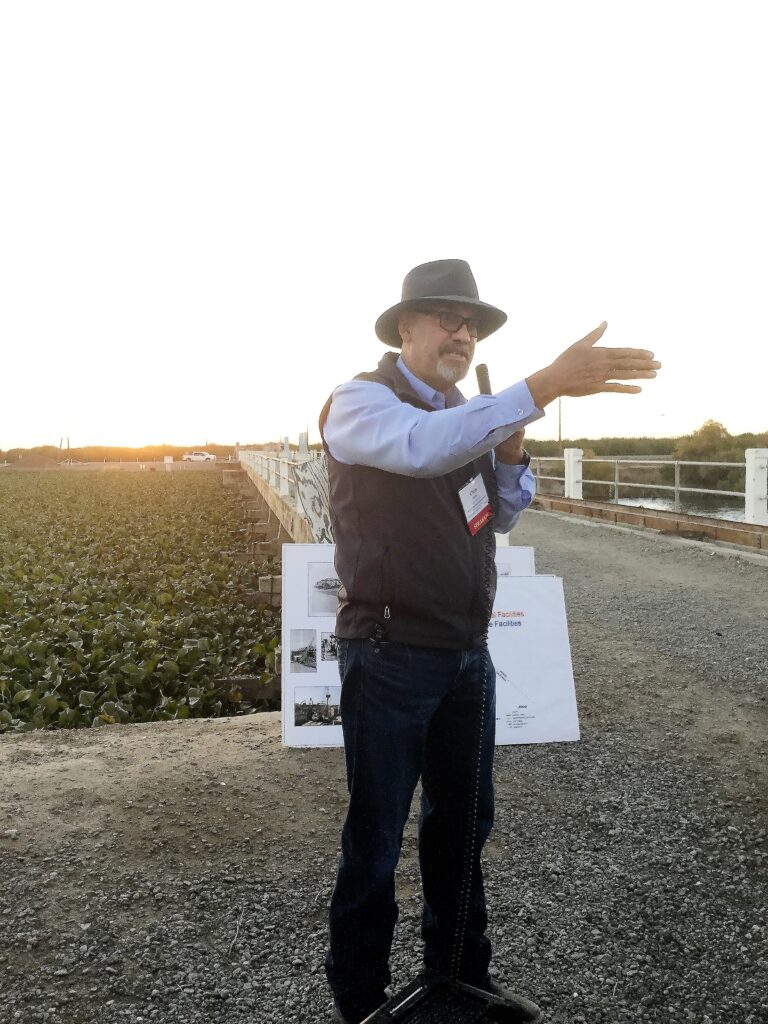Though questions remain about whether San Joaquin Valley towns and farms that rely on water from Millerton Lake could be cut to zero, as they were in the last drought, water managers are moving ahead as if that won’t happen.
In 2014 and 2015, the federal Bureau of Reclamation wasn’t able to get enough water out of Shasta Lake through the Sacramento-San Joaquin Delta to satisfy obligations is has to agricultural water districts known as the San Joaquin River Exchange Contractors. Instead, the Bureau pulled water from Millerton Lake for the Exchange Contractors and cut other users from Fresno all the way to Arvin to zero in those years.
History appeared on the verge of repeating in the 2021 drought when the State Water Resources Control Board alerted the Bureau that it needed to keep more water in Shasta for winter-run Chinook salmon. The fish need cool temperatures to survive the summer and be able to spawn. The Water Board demanded the Bureau cut back its delta exports in order to keep 1.25 million acre feet in Shasta through summer.
That raised the specter that Exchange Contractors could call on Millerton water again.
The Bureau responded to the state Water Board on May 27 that its temperature management plan would shoot for 1.25 million acre feet in Shasta but that it couldn’t guarantee a specific temperature level. It’s May 27 letter also notes that the Bureau doesn’t need state Water Board approval for its plan and that if the Board objects it must provide an alternative water management scenario, otherwise, it was moving forward with its plan.
Then earlier this week, the state Water Board approved a temporary relaxation of required river outflows for water moving through the delta. The river flows are needed to push back salt coming in from the San Francisco Bay. A lower outflow requirement means the Bureau can keep more water in storage for other uses.
That, combined with the Bureau’s May 27 letter about its temperature plan, buoyed assumptions by the Friant Water Authority that its contractors would receive their promised 20% water allocations out of Millerton, according to an emailed statement from Authority General Manager Jason Phillips.
This week’s actions by the state Water Board appeared they would “prevent the potentially disastrous action of releasing water from Friant Dam this summer to meet the Exchange Contract requirements,” Phillips wrote.
Friant could be whistling past the graveyard too soon as the state Water Board has until June 14 to object to the Bureau’s temperature plan.
The Exchange Contractors are still waiting to see what the state Water Board will do, according to Chris White, Executive Director of the San Joaquin River Exchange Contractors Water Authority.
“It’s uncanny this is all still coming together in June. It’s really late,” he said. “It’s such a complicated system in northern California and when you lock up your largest asset (Shasta Lake), it makes operations very difficult.”
Part of the problem is forecasting for reservoir inflows from snow runoff changed dramatically from March to May and again in June, dropping significantly.
White said landowners in Exchange Contractor districts are fallowing land and pumping more groundwater to reduce demand for delta water in order to avoid a repeat of 2014 and 2015. In those years, he said, Exchange Contractors ended up selling some water to Friant Contractors to help out, about 13,500 acre feet at a cost of $250 an acre foot.
The Exchange Contractors are a group of four agricultural water districts that cover lands from Mendota north to Newman along the west side of the valley. Back in the 1930s, they agreed to let the Bureau send their San Joaquin River Water to farms and towns along the valley’s eastern edge in “exchange” for water from the delta. In normal years, they receive more than 800,000 acre feet from the Bureau. In dry years, they get 650,000 acre feet, according to White.
Share this:
- Click to share on Facebook (Opens in new window)
- Click to share on Twitter (Opens in new window)
- Click to share on LinkedIn (Opens in new window)
- Click to share on Reddit (Opens in new window)
- Click to share on Tumblr (Opens in new window)
- Click to share on Pinterest (Opens in new window)
- Click to share on Pocket (Opens in new window)
- Click to share on Telegram (Opens in new window)
- Click to share on WhatsApp (Opens in new window)
- Click to print (Opens in new window)







